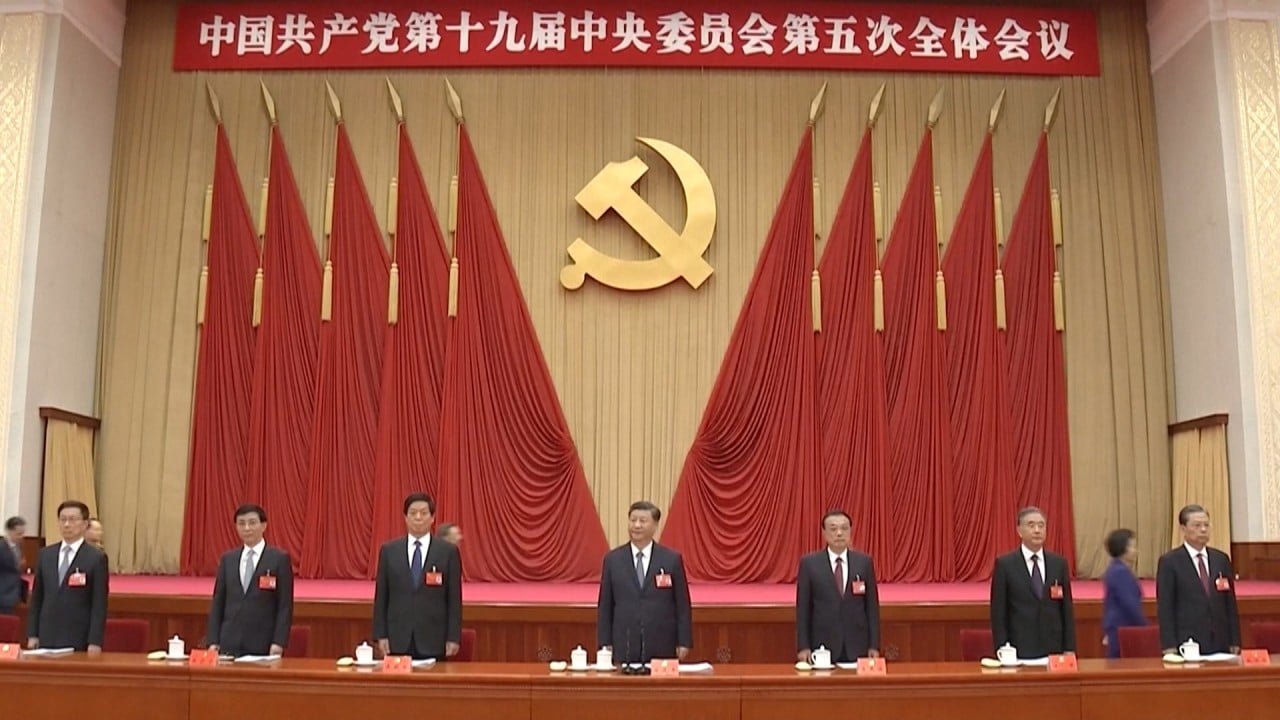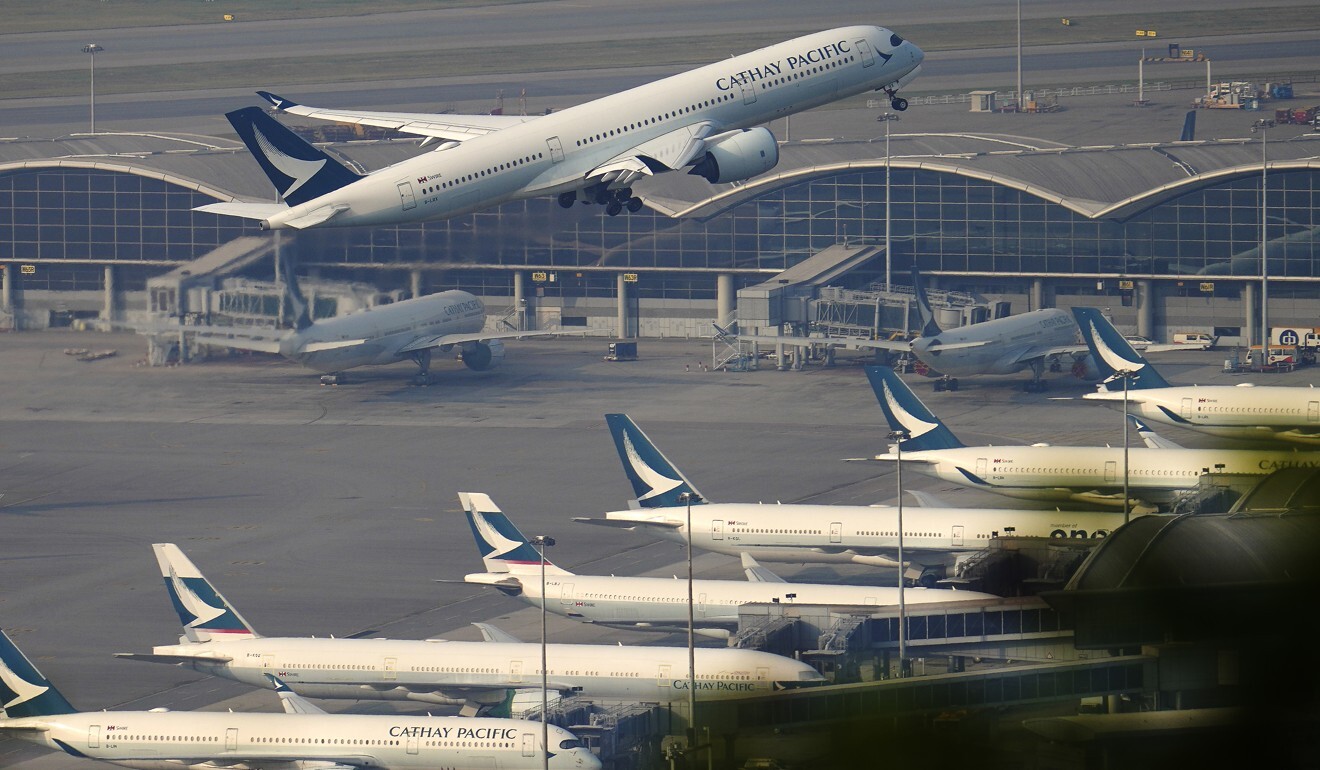
Explainer | How important is Carrie Lam’s Beijing trip before her policy address, and what’s at stake for Hong Kong?
- Chief executive postponed her policy speech last month, citing need to consult central government, raising expectations of solid policy gains
- Move adds to concern over Hong Kong’s role in national development amid Shenzhen’s rise and talks on country’s 14th five-year plan
The Post looks at what may be on Lam’s policy wish list, who her team could meet, and what Hongkongers can expect from the talks.

Is this trip an unusual arrangement? Why did Lam seek such meetings?
The move is indeed uncommon. Since taking office in July 2017, Lam had delivered three annual policy addresses in October, after months of local consultation.
Lam said she submitted proposals to Beijing, and was asked to go to the capital and attend ministerial meetings to explain her plans. Policy gains could then be incorporated into her speech in November, she added.

03:05
What happened at the Chinese Communist Party’s major policy meeting, the fifth plenum?
What could be on Lam’s wish list?
1. Cross-border travel: Lam said on Tuesday that a resumption of cross-border trips between Hong Kong and the mainland would be the “most important” issue for her.

3. Transport: Lam said she hoped the central government would allow the city’s private cars to enter the mainland without having to apply for cross-border licences.
5. Housing and education: Under a broad deal signed by Lam and Guangdong Governor Ma Xingrui on Friday, Hong Kong residents will find it easier to buy homes and send their children to public schools in the mainland province.

00:56
Hong Kong leader Carrie Lam to visit Beijing for talks on reviving economy
6. Hong Kong’s role in China: Commentators believed Lam would discuss with Beijing officials how her city could contribute to the country’s growth, with the 14th five-year plan being finalised.
What’s at stake for Hong Kong with Lam’s trip, and why are there fears of the city becoming irrelevant?

A communique issued on Thursday at the end of the Communist Party’s fifth plenum vowed to ensure the long-term prosperity and stability of Hong Kong and Macau. But the document made no other direct reference to the international finance hub, raising questions as to whether the city continued to be relevant to Beijing’s plans.
Rather than going into detail on the roles of different cities in China, the communique focused largely on the central government’s 14th five-year plan, and vowed to attain a higher level of opening up, as well as boosting self-sufficiency in the technology field from next year to 2025.

Who will Lam meet in Beijing, and will they be state leaders such as Vice-Premier Han Zheng?
Some pro-establishment politicians expected Lam to meet Han, the state leader in charge of Hong Kong affairs and the Greater Bay Area project. According to a source, Lam would meet the vice-premier on Friday.
But Lau Siu-kai, vice-president of the semi-official think tank the Chinese Association of Hong Kong and Macau Studies, said Lam’s visit was a “working trip”, and Han was unlikely to receive her this time.
“There is no pressing need for Han to meet Lam, as she is scheduled to meet President Xi Jinping and Premier Li Keqiang during her annual duty visit to Beijing next month,” Lau said.
Lam’s current five-day trip saw her depart for the Chinese capital via Shenzhen on Tuesday afternoon. She is expected to leave Beijing for Guangzhou on Friday, and will hold separate talks with leaders of Guangdong province and Shenzhen the following day.
Hong Kong observers divided over Lam’s decision to delay address
Lam on Tuesday said she would meet four to six central government ministries in Beijing from Wednesday to Friday. That would include the National Health Commission, she added.
A source said the chief executive was also expected to visit the National Development and Reform Commission, the Hong Kong and Macau Affairs Office, and the Civil Aviation Administration of China.
Should Hongkongers expect much from Lam’s trip?
Fang Zhou, research director of the One Country Two Systems Research Institute, a Hong Kong think tank, said he did not hold high expectations of many concrete measures being included in Lam’s coming policy address, even after the talks.
“The significance of her trip to Beijing is that she may get some clearer ideas on Hong Kong’s role in the 14th five-year plan,” he said.
But Lau Siu-kai said he believed the central government was likely to come up with solid measures to support Hong Kong’s technology and financial industries.
“Lam’s postponement of her policy blueprint unnecessarily raised Hongkongers’ expectations. They would be disappointed if she only announced some broad directions,” he said.

